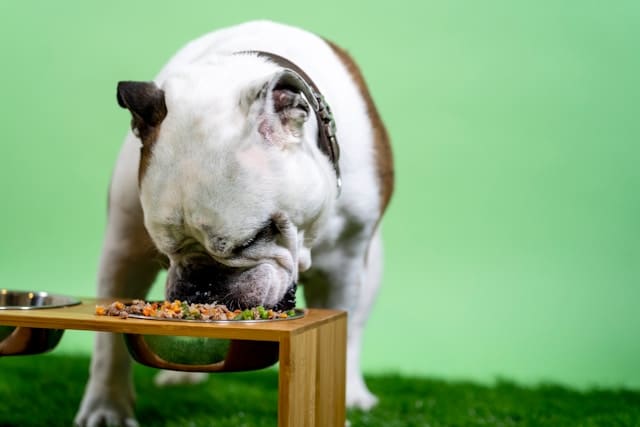How to Develop a Feeding Schedule That Suits Your Pet’s Nutritional Needs?

As pet owners, we all want the best for our furry friends. This includes keeping them healthy and happy by providing a balanced and nutritious diet. But with the sheer variety of pet food options available, it’s easy to get confused and overwhelmed. Developing a feeding schedule that meets your pet’s nutritional needs is a crucial step in ensuring their wellbeing. In this article, we’ll guide you through the process of creating a suitable feeding schedule, addressing your pet’s specific dietary requirements, and helping them thrive under your care.
Understanding Your Pet’s Nutritional Needs
Before we can dive into creating a feeding schedule, it’s essential to first understand your pet’s nutritional needs. As with humans, each pet is unique, and what works for one may not work for another. Factors such as age, size, breed, activity level, and health status play a significant role in determining the type of diet your pet should be on.
Avez-vous vu cela : What Are the Best Cooling Mats or Beds for Pets During the Summer Months?
Cats, for instance, are obligate carnivores, which means they need a diet primarily composed of meat. They require high amounts of proteins and fats, minimal carbohydrates, and certain nutrients like taurine which can only be obtained from animal sources.
Dogs, on the other hand, are omnivores and can thrive on a balanced diet of proteins, fats, and carbohydrates. However, the proportions can vary based on their life stages, size, and activity levels.
En parallèle : What Are the Best Techniques for Reducing Stress During Veterinary Visits for Your Pet?
Consult with your vet to better understand your pet’s specific dietary needs, and consider these factors when choosing pet food. This is the first step in creating a feeding schedule that truly caters to your pet’s nutritional requirements.
Evaluating Different Types of Pet Foods
The pet food market is flooded with different types of food – dry, wet, grain-free, raw, and more. Each type has its advantages and disadvantages, and it’s important to evaluate these in the context of your pet’s nutritional needs.
Dry pet food, or kibble, is popular due to its convenience and long shelf life. It’s also generally more cost-effective. However, it’s often high in carbohydrates and may not be suitable for pets with certain health conditions, such as diabetes.
Wet food is highly palatable and can be a good option for picky eaters. It also provides hydration and may be beneficial for pets with urinary tract issues. But, it’s more expensive and has a shorter shelf life once opened.
Grain-free and raw diets have gained popularity in recent years, but they’re not necessarily better. They can be suitable for pets with specific allergies or intolerances but aren’t necessary for all pets. Always consult with a vet before switching to these diets.
Understanding the pros and cons of each type of food will assist you in making an informed decision that is in the best interest of your pet’s health.
Creating a Feeding Schedule
Once you’ve determined the type of food that best suits your pet’s nutritional needs, the next step is to create a feeding schedule. This schedule should take into account your pet’s age, size, and activity level.
Puppies and kittens generally require frequent small meals throughout the day, as they’re growing rapidly and need a steady supply of nutrients. Adult pets, on the other hand, typically do well with two meals a day. However, the exact number of meals can vary based on your pet’s specific needs and your schedule.
As a rule of thumb, it’s best to feed your pet at the same times each day to establish a routine. This not only helps regulate their digestion but also aids in training and behavior management.
Remember, overfeeding can lead to obesity and other health problems. Use feeding guides on pet food packaging as a starting point, and adjust the amount based on your pet’s weight and activity level. If you’re unsure, consult with your vet.
Factoring in Treats and Extras
We all love to spoil our pets with treats and extras, but it’s crucial to factor these into their overall diet. Treats and table scraps should make up no more than 10% of your pet’s daily caloric intake.
While treats can be a valuable training tool, they can also contribute to weight gain if not monitored. Choose low-calorie, healthy treats whenever possible, and always consider the size of the treat in relation to the size of your pet.
Table scraps, on the other hand, can be tricky. While it’s tempting to share our food with our pets, many human foods are not safe for them. Foods high in fat can lead to pancreatitis, and certain ingredients, like onions and chocolate, are toxic.
Always ensure that any extras given are safe for your pet, and keep these to a minimum to avoid disrupting their balanced diet.
Regularly Re-evaluating Your Pet’s Diet
As your pet ages, their nutritional needs will change. Regular visits to the vet for check-ups and weight monitoring are essential to ensure that their diet is still meeting their needs.
Puppies and kittens will eventually need to transition to adult food, and older pets may need a diet lower in calories but higher in fiber and certain nutrients. Similarly, changes in health status, such as a diagnosis of diabetes, can necessitate a diet change.
Keeping an open dialogue with your vet will help you stay on top of your pet’s dietary needs and make necessary adjustments to their feeding schedule.
Creating a pet feeding schedule that meets your pet’s nutritional needs is not a one-size-fits-all proposition, but with the right information and guidance, you can give your pet the balanced diet they need to thrive. And remember, all pets are individuals – what works for one may not work for another, so always be willing to adjust and adapt as needed.
Monitoring Your Pet’s Health
Now that you have a feeding schedule in place, it is crucial to monitor your pet’s health. Noting changes in your pet’s behavior, weight, and general wellbeing can provide valuable insight into whether their diet is suitable or if adjustments need to be made.
Weight changes are a vital indicator of your pet’s health. A sudden loss or gain in weight could signify an underlying health issue or simply that your pet is not getting the right amount of nutrients from their diet. Regular weigh-ins can help keep track of any changes.
Moreover, maintaining a healthy weight is especially important for your pet. Overfeeding can lead to obesity, which can result in numerous health problems like diabetes, arthritis, heart disease, and reduced life expectancy. Conversely, underfeeding can result in nutritional deficiencies.
Behavioral changes should also be observed. If your pet becomes lethargic or unusually active, it may be related to their diet. Your pet’s coat condition is another indicator of their health. A shiny, lustrous coat often indicates a balanced diet, while a dull, patchy coat can be a sign of nutritional deficiencies.
Lastly, observe your pet’s stool. The consistency, color, and frequency of your pet’s stool can give you an idea about their digestive health and whether they are absorbing the nutrients from their food.
Proactive monitoring coupled with regular vet check-ups can help ensure that your pet’s nutritional needs are being met. Always consult your veterinarian if you notice any alarming changes.
Conclusion: Ensuring a Balanced Diet for Your Pet
Creating a feeding schedule that meets your pet’s nutritional needs involves more than just deciding when to feed your pet. It involves understanding your pet’s unique dietary requirements, considering the type of pet food that meets these needs, regularly re-evaluating their diet, and constantly monitoring their health.
By following these steps, you can ensure that your pet receives a balanced diet. Remember to always consider your pet’s preferences and needs before making any drastic changes to their diet. Whenever in doubt, consult your veterinarian for professional advice.
Feeding your pet is not merely a chore to be done; it’s an opportunity to show love and care. A balanced diet paired with regular exercise, a comfortable living environment, and plenty of affection will help your pet live a long, happy, and healthy life.
Ultimately, investing time and effort in understanding your pet’s nutritional needs and creating a tailored feeding schedule is well worth the rewards. It will not only enhance your pet’s health and longevity but will also deepen the bond you share with your beloved furry friend.
